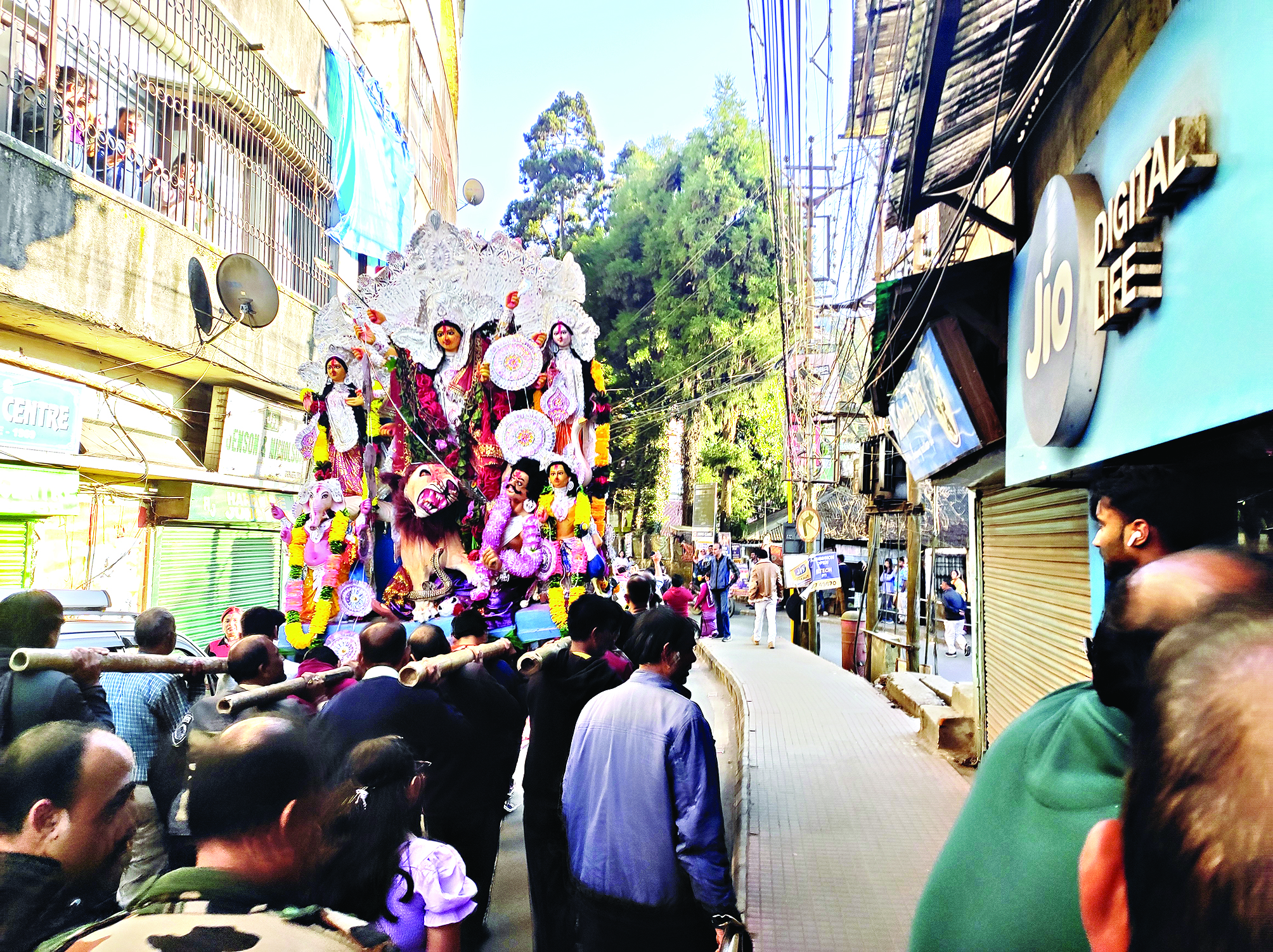Immersion of 109-year-old Darjeeling Puja also steeped in tradition

For the 109-year-old Durga Puja organised by the Nripendra Narayan Bengali Hall (NNBHH,) Darjeeling, Bisarjan (immersion) is as unique as the Puja, steeped in tradition.
In the olden days the immersion procession used to be accompanied by a Police Band and the members dressed in traditional attire used to sing devotional songs all along the way.
The idol used to be carried on a bamboo structure, by the youngsters and taken all over town and immersed in Kakjhora, a spring. On the way to Kakjhora, the procession used to halt at different affluent Bengali homes for a round of refreshments.
The ultimate halt before reaching Kakjhora was the Burdawan Palace. The Maharaja of Burdwan used to see the face of the idol, offering a golden Mohar (coin).
From Pushpanjali to Bhog and Aarti everything echoes of tradition at the NNBHH –preserved religiously through the ages, yet preserving the Hill’s simplicity. No pandal is erected for the Puja and the idol is placed on the main altar of the temple, popular as Shree Mandir, belonging to the NNBHH. The temple, though small in size, resembles the famous Jagganath Temple of Puri.
The present structure came up in 1908 after a fire had razed the old structure to the ground in 1906.
In 1914, the Bengali population started the Durga Puja at the temple. Great personalities such as Sister Nivedita, Kazi Nazrul Islam, Acharya J C Bose and others paid a visit to this hall.
Nowadays things have changed a bit, the police band is missing and so is the Kakjhora which has become a victim of illegal constructions but still the image is carried on the shoulder and taken all over town and then by truck to a spring called Bangla Khola near Sonada. “It is not possible to carry the idol all around town and to far-flung places anymore. Just to continue with the tradition we still carry the idol on our shoulders till the Railway Station,” said an organiser.
Following the immersion ceremony, hot “Malpuas” (sweets) are served during the “Bijoya Sammelani”.



